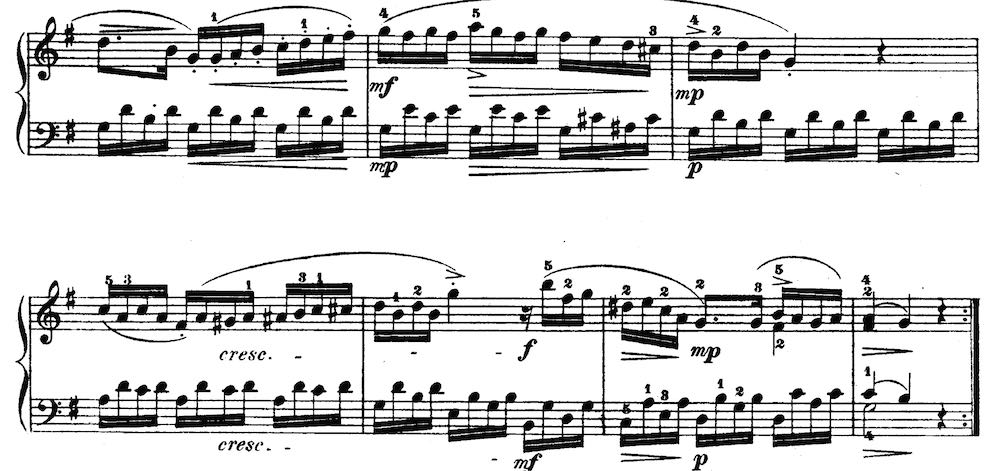Music consists of three main elements melody, harmony and rhythm. All of these elements can be found in almost all genres of music, pop music, rock music, blues music, classical music… you name it, you will hear harmony in music!
So let’s define what harmony is and how it’s used.
What is harmony?
So what is harmony? The term harmony simply means when two or more notes are played at the same time. There is no requirement for these notes to sound perfect together but most composers or songwriters will follow a specific chord progression. Music sounds much nicer when consonant chords are used as our ear finds these most pleasing, that’s why we have common chord progressions. However, it is great to have a healthy mix of consonant and dissonant sounds as you will see.

The history of Harmony
Harmony did not appear by accident, it is based on certain relationships between musical tones that the human ear accepts and is pleased by. You can even prove these relationships within science, it is almost as if harmony was created by nature!
These scientific relationships between musical tones were first demonstrated by Pythagoras. He divided up a stretched string and plucked. By doing this, he was able to demonstrate that the most common musical intervals that the ear perceives are the intervals of an octave, a fifth and a fourth.
How did harmony develop?
Harmony developed and evolved from the Middle Ages and Renaissance music. During this time, polyphony was used, meaning that several voices or parts were played at the same time. This in turn actually came from the Ancient Greek music where melodies were entirely sung in unison or octaves. The harmonies that developed first came from what we now call modes. To learn more about these then make sure to click here!
By the 9th century, plainchant became common practice with only a few instances of the use of harmony at the interval of a fourth or fifth. This would create parallel perfect intervals. This very basic early harmony was often referred to as organum and is one of the first instances of harmony. Music did slowly develop into free harmony with an extra line of melody sung in contrary motion to the melody line. However, the common intervals were still used and the music would always resolve onto the main note of the mode.

Harmony within composition continued to be viewed as a horizontal concept until about the 15th century. Although even then, the basic style of composition was still considered in a vertical way. Composers used counterpoint as the main form of composition and the harmony was created by this counterpoint. Composers did begin to pay more attention to the harmonies they were creating but it was by no means the main focus.
By the end of the 16th century, this use of contrapuntal style was beginning to be abandoned as composers began to focus on a more expressive melodic line supported by the harmony ( homophonic texture).
Classical western harmony as we know it now began around 1600 and this included the concept of a key (scale) and of modulation. So let’s look at some of the building blocks of harmony.
Building blocks of harmony
There are a few main elements within harmony and these are as follows:
The Key or scale
One of the most important aspects of harmony is simply what key (scale) you are in. What key you are in can then determine what chords can be used. Using a chord progression is one of the best way to harmonize.
In tonal music theory, chord progressions are most commonly used as they sound pleasing to the ear. As we saw earlier, this can be scientifically proven! In order to know which chords you will use in the harmony, you need to first decide whether you are using a major scale or a minor scale. From here you can then build a major triad or a minor triad on each note in that scale.
Whether the triad will be major or minor depends on which scale you have chosen. Each chord then has a specific function either to move away or toward the key note. This is where the idea of common chord progressions comes from as there are particular orders of chord that create this movement away and towards the key note. This is called functional harmony.
Let’s have a look at building a triad on each note of a C major scale.

The first chord, or tonic chord, starting on the root note, will be a c major triad. But the second chord will be a D minor triad as the third of the chord is F natural. This chord has an F natural, because the key signature of C major has nothing in it! If this feels overwhelming then make sure to check out our article on chords!
Primary and Secondary Triads
Remember in each scale we have our primary triads and our secondary triads. The primary triads consist of tonic chords, subdominant chords and dominant chords (I, IV, V). In fact, most melodies can be harmonized just using these chords but it isn’t the most exciting thing to do.
Below you can see the primary triads of the F major scale.

If you want to know some of the most popular chord progressions then make sure to check out our blog post here!
Modulation
The next thing to consider, is whether you will modulate your harmony. In tonal harmony, it is very common to start in a major or minor key and modulate to a related major or minor key. This can help with the structure of a piece as it helps to show the different sections of a song or composition. The most common places to modulate to are the relative major/minor, the subdominant key or the dominant key.
For example if we are in the key of C major, the most common places to modulate to from here will be:
F major (subdominant)
G major (dominant)
A minor (relative minor)

Harmonic speed
Your harmonic speed is also essential to consider. This simply refers to how quickly you will change chord. In most popular western music, the chords will change once a bar or every other bar.

Rhythm
Similar to harmonic speed, you need to think about the rhythm of your melody line. Your harmony could have the same rhythm as your melody line or it could be a bit slower and only change once a bar.

In the above example from a Mozart sonata you can see that the harmony almost exactly the same rhythm as the melody.
What are the different types of harmony?
There are three main different types of harmony and these are:
- Diatonic Harmony – in diatonic harmony, all the notes and chords used can be traced back to one scale. Using diatonic harmony creates a pleasing arrangement of chords and harmonic relationships.
- Non Diatonic Harmony – non diatonic harmony is used more in jazz music and it simply means that although you are still within a key, you will find more unrelated extra notes throughout the melody. One example of this is by using altered chords.
- Atonal harmony – Atonal harmony refers to a composition that simply has no key. In other words, it uses all 12 pitches available and is based on the chromatic scale. This is used a lot in free jazz improvisation or the music of the composer schoenberg. Schoenberg was famous for using the 12-tone row and this was often referred to as serialsim.
Implied harmony
You may also see use of implied harmony. This is a useful tool, especially if you are using musical instruments that can only play one note at a time. When writing harmonies for these instruments you have to look at all the individual parts to fill in the harmonies. If you only have a certain number of instruments, and certainly not enough to play all three notes of a triad or four notes of a seventh chord, you will have to use what we call implied harmony.
Implied harmonies literally do what they say on the tin, you want to give the impression of playing that chord. So for example, if you have only two flutes but you want to play the harmony of a C major triad, you would have one flute play the root note (C) and the other play the third of the chord (G). By using these two notes we will hear a C major triad!

Implied chords are used a lot in jazz music!
Harmony is fascinating and can make or break a piece of music! If you have great harmony you can really elevate your melody line or tune. As we have seen, in most western music, harmony involves chords at its core. If you want to create harmonies then I highly suggest making sure to become familiar with the different keys and types of chords available to you!
What’s Next…?
- Learn more about chords with our guide to the most popular chord progressions.
